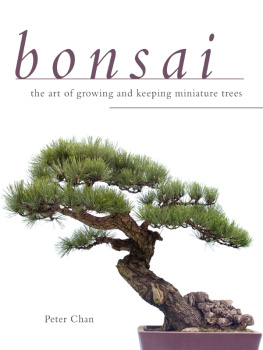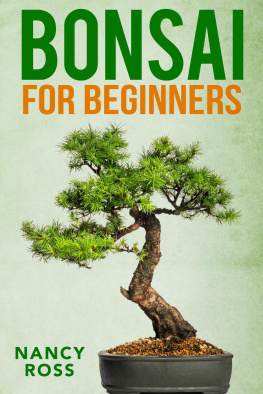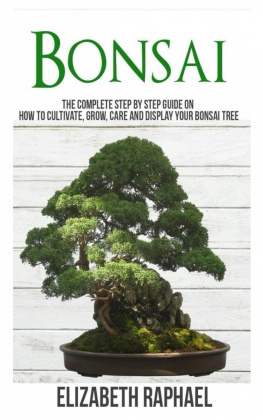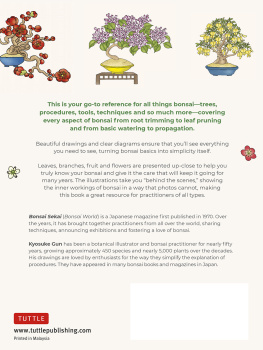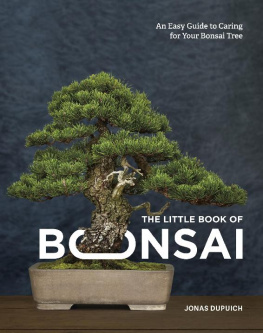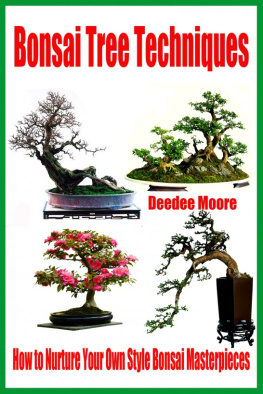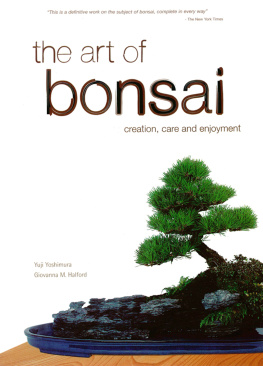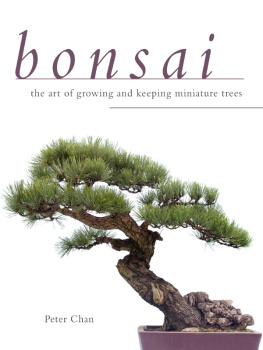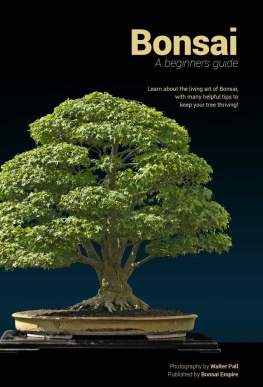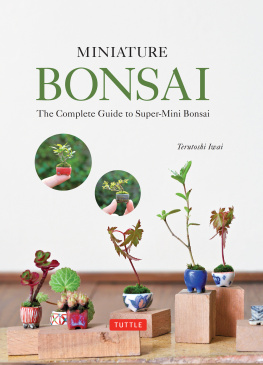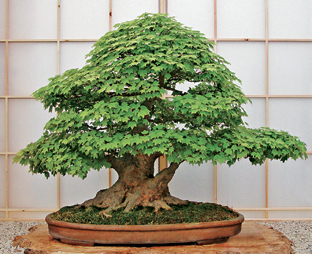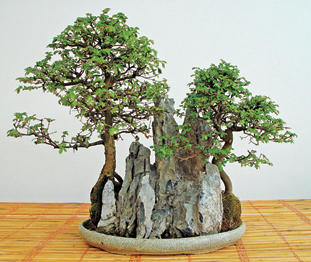The
BONSAI
Bible
Peter Chan
The definitive guide to choosing and growing bonsai
MITCHELL BEAZLEY
How to use this ebook
Select one of the chapters from the main contents list and you will be taken straight to that chapter.
Look out for linked text (which is underlined and/or in a different colour) throughout the ebook that you can select to help you navigate between related sections.
Contents
Introduction
Bonsai are now part of our lives. Like oriental food, they are now taken for granted and most people are familiar with them. No longer are these tiny trees regarded as curiosities or botanical freaks, as they were a few decades ago. There was a time when they were available only at specialist centres, but now it is possible to buy bonsai in shopping malls and on the internet. These plants can also be found at garden centres and horticultural shows.
Some bonsai are relatively inexpensive, while others can be very costly. As with any commodity, the different styles and grades of bonsai are reflected in the price. You can buy a young, newly trained bonsai with very limited funds, or you can spend thousands on an exquisite masterpiece that has been shown at major exhibitions in Japan. Serious enthusiasts regard good-quality bonsai as works of art, and these are highly collectable items.
Common juniper is ideal for training in the driftwood style.
Although the art of bonsai is essentially about growing trees, for many people it is much more than that. Bonsai plants convey something about the owners lifestyle, aesthetic sense and attitude towards nature and the environment. Growing bonsai has come to be associated with Zen aesthetics, and some practitioners derive a special therapeutic benefit, which comes from the innate peace and tranquility that working with bonsai imparts. Like yoga and tai chi, bonsai are said to have a calming influence on the mind and spirit, and they can help to relieve the stresses of todays busy world.
Bonsai are certainly beautiful to look at, but there is much more to the pastime than simply achieving beauty. The image of an ancient tree clinging to a rock and struggling to survive against all the odds has been a source of inspiration for Chinese sages and scholars for at least two millennia.
Keeping bonsai is not just about gardening it is art and spirituality combined with horticultural techniques. Creating bonsai is a challenge, and enthusiasts are forever striving for horticultural and aesthetic excellence. Unlike other artistic projects, however, a bonsai is never finished. It continues to grow and change, which means that perfection is always transitory and beauty is only momentary. Growing bonsai is a never-ending quest for perfection.
Nothing could be more stunning than a satsuki azalea bonsai in bloom. There are hundreds of varieties in a wide range of colours.
Those who are dedicated to the hobby regard it as a way of life. It requires commitment and can dictate the way you spend your time and resources. Your weekends and holidays can soon become geared around your bonsai activities. Nevertheless, the rewards that come from striving for a perfect work of art more than compensate for the time and effort involved.
In mid-summer, stewartia bonsai produce delicate, cup-shaped flowers which resemble those of their near relations, the camellias.
What is a bonsai?
Most people are familiar with a bonsais appearance, but what exactly is a bonsai? Not every tree grown in a pot will qualify as a bonsai. For a tree to be regarded as a bonsai, it must have certain defining characteristics: it must be grown in a container; it must have a distinctive artistic shape; and it must be miniature in size. A bonsai should be a small-scale replica in a pot of a fully grown tree that you might see in nature, its size and aesthetic appearance controlled by regular pruning, pinching and shaping, watering and feeding.
The 21 styles
The Chinese, who invented bonsai, still refer to them as artistic pot plants, which implies that bonsai are not simply plants in pots but also works of art. To qualify as a bonsai, a tree should conform to one of the distinctive bonsai styles. There are 21 principal shapes, which may be single-trunk, multi-trunk or multi-tree styles. The different formations range from the absolutely straight formal upright style and the S-shaped informal upright style (the most common of bonsai shapes) to the stripped-bark driftwood style, .
This trident maple is an excellent specimen, with a fine root buttress and tapered trunk and a natural appearance.
Chinese beginnings
The art of bonsai has a rich and colourful history. It was the ancient Chinese who first practised the art more than two millennia ago. The word bonsai derives from two Chinese words meaning a potted tree: bon (or poon ) means pot and sai (or sue ) means tree.
The Chinese have been growing ornamental plants for thousands of years they were one of the earliest civilizations to do so. They also have a tradition for making fine ceramics, which dates back many thousands of years. It is not surprising that when these two arts were brought together the result was bonsai plants grown in ceramic pots.
This trident maple has been trained in the Japanese style, which is usually less ornamental than the Chinese approach.
The Chinese loved the art of bonsai, but during the 1950s and until the 1980s it was nearly extinguished by the communist regime, which regarded growing bonsai as a revisionist and bourgeois pastime. It is only in the last few decades that the Chinese authorities have started to encourage the practice of bonsai again, and now it is once more a thriving and vibrant art form. For some people it is a pleasant and enthralling way to pass the time, but for others bonsai is big business, and almost all the indoor bonsai sold around the world today come from China.
These Chinese elms make a good example of Chinese bonsai style. They have been planted in the penjing (landscape) style.
Gradual Japanese differences
The Japanese are also involved in bonsai, but, contrary to popular belief, the practice did not originate in Japan. The Japanese started creating bonsai around the 12th century CE , almost a millennium after the Chinese first practised the art.


